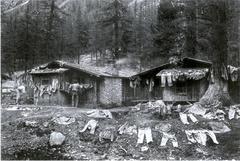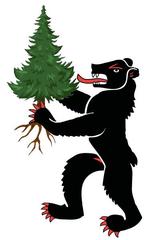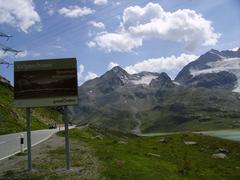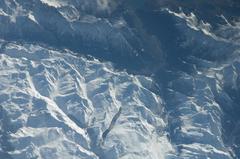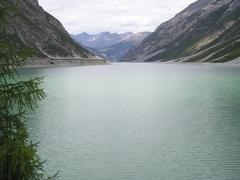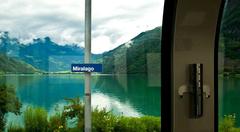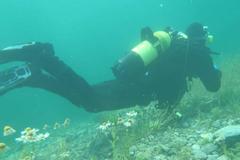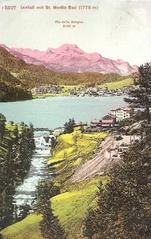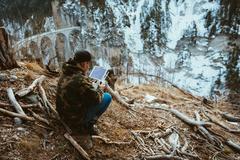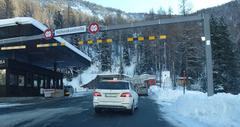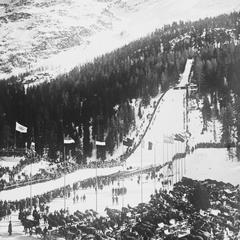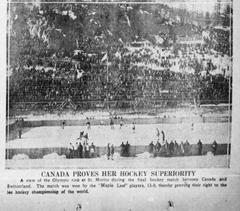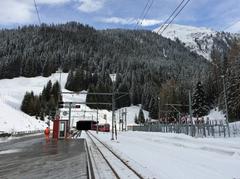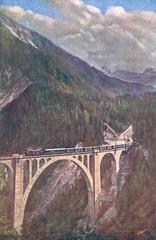Arosa Visiting Hours, Tickets, and Travel Guide to Canton of The Grisons, Switzerland
Date: 14/06/2025
Introduction: Arosa’s Significance in the Canton of Graubünden
Nestled high in the Swiss Alps in the picturesque Schanfigg Valley, Arosa is a captivating alpine destination in the Canton of Graubünden (Grisons). Renowned for its combination of rich history, vibrant culture, and breathtaking natural beauty, Arosa sits at approximately 1,800 meters (5,906 feet) above sea level. Over the centuries, it has evolved from a medieval farming settlement into one of Switzerland’s premier year-round resorts, welcoming visitors for its historic sites, cultural events, world-class skiing, and hiking opportunities. Its idyllic setting, surrounded by the Weisshorn and Rothorn peaks and tranquil lakes like Obersee and Untersee, makes it a must-visit for both outdoor enthusiasts and history lovers (Magic Switzerland; Wikipedia; Swiss Glorious).
Arosa’s transformation began in the Middle Ages under the Bishopric of Chur, and by the late 19th century, it had become a pioneering health resort famed for its clean mountain air. The arrival of the Arosabahn railway in 1914 was pivotal, opening the region to visitors from around the world and establishing Arosa as a premier winter sports destination (Ski Club UK). Today, Arosa blends tradition and innovation, offering historical attractions such as the Mountain Church and Eggahuus Local History Museum, alongside modern highlights like the Arosa Bear Sanctuary and extensive outdoor infrastructure.
This guide provides essential information on Arosa’s history, visiting hours, ticketing, travel tips, and notable attractions, ensuring you have everything you need for an unforgettable experience in this Graubünden gem (MySwitzerland; Arosa Tourism).
Table of Contents
- Introduction
- Historical Overview
- Visitor Information
- Notable Attractions
- Arosa in Swiss Tourism Context
- Frequently Asked Questions (FAQ)
- Visuals and Media
- References
Historical Overview
Early Settlement and Medieval Origins
Arosa’s roots trace back to the Middle Ages, when the area was part of the Bishopric of Chur. Archaeological findings suggest sporadic settlement in the Schanfigg Valley since prehistoric times, but permanent habitation began in the 13th and 14th centuries. Life centered on alpine farming and forestry, with the region’s isolation fostering a self-reliant community. The Mountain Church of Arosa, built in the late 15th century, stands as a testament to these origins, its wooden roof and historic organ reflecting enduring spiritual and architectural traditions (Magic Switzerland).
Rise as a Health Resort
The late 19th century brought a dramatic shift as Arosa was “discovered” for its therapeutic climate. The founding of the first sanatorium in 1888 marked the start of its reputation as a health resort, attracting visitors seeking relief from respiratory ailments. Accessibility improved with the extension of the railway from Chur, culminating in the opening of the Arosabahn in 1914—a marvel of alpine engineering that still delights travelers today (Magic Switzerland).
Winter Sports and Modern Expansion
By the early 20th century, Arosa embraced winter sports, quickly establishing itself as a ski destination. The development of ski lifts and cable cars, such as the Tschuggen and Weisshorn lifts, enabled easy access to the slopes. In 2013, the Urdenbahn cableway linked Arosa with Lenzerheide, creating one of Switzerland’s largest ski areas with over 225 km of trails (Ski Club UK). Today, Arosa is as popular in summer as it is in winter, with a wealth of hiking, biking, and wellness opportunities.
Cultural Heritage and Community Life
Arosa’s culture is rooted in its Walser heritage—an alpine people whose influence can be seen in local architecture, dialect, and traditions. The Arosa Museum showcases artifacts and exhibits chronicling the village’s evolution. Festivals, cheese-making at Alp Maran, and the famed Arosa Humor Festival highlight the area’s vibrant community spirit (Magic Switzerland).
Visitor Information: Hours, Tickets, and Tips
Visiting Hours & Accessibility
- Mountain Church of Arosa: Daily, 9:00 AM – 5:00 PM, free entry.
- Arosa Museum (Eggahuus): Tuesday–Sunday, 10:00 AM – 5:00 PM. Closed Mondays.
- Arosabahn Railway: Frequent service, check official schedules for seasonal variations.
- Arosa Bear Sanctuary: Daily, 9:00 AM – 5:00 PM (MySwitzerland).
- Bergkirchli (Mountain Church): Open during daylight hours; check locally for details (Tschuggen Collection).
Most attractions are accessible, though some alpine trails and historic paths may be challenging for visitors with limited mobility.
Ticket Prices
- Arosa Museum: CHF 8 (adults), free for children.
- Bear Sanctuary: CHF 10 (adults), CHF 5 (children).
- Arosabahn Railway: Chur–Arosa return CHF 30–40.
- Cable Cars: Round-trip to Weisshorn approx. CHF 40–50. Seasonal ski/lift passes CHF 50–70/day.
- Arosa Card: Free for guests staying in local accommodations; includes public transport and cable car access.
Travel Tips
- Check official websites for current hours and ticket prices before your visit.
- Book tickets online in advance during peak periods.
- Pack layered, weather-appropriate clothing—Alpine weather is changeable.
- Use the Arosa Card for free/discounted local transport and activities.
- Trains from Chur to Arosa run hourly and offer scenic views.
- Many attractions and restaurants are accessible, but verify details if you have specific needs.
Notable Attractions
Historic and Cultural Landmarks
- Bergkirchli (Mountain Church): Dating to 1492, this atmospheric church is Arosa’s oldest building, accessible via a historic trail (Tschuggen Collection).
- Eggahuus Local History Museum: Traditional Walser house with exhibits on Arosa’s rural past (Tschuggen Collection).
- Walser Settlement of Sapün: Preserved alpine valley community between Arosa and Chur—ideal for hiking and cultural immersion.
Natural Attractions
- Weisshorn: Accessible by cable car, offering breathtaking panoramic views, sunrise outings, and winter/summer activities (MySwitzerland).
- Maran Plateau: Features Europe’s highest 18-hole golf course and renowned alpine dairy.
- Obersee and Untersee Lakes: Popular for swimming, boating, and lakeside relaxation (Swiss Glorious).
- Prätschalp: Scenic mountain area with rustic restaurant and snowshoe trails (Tschuggen Collection).
Unique Experiences
- Arosa Bear Sanctuary: Pioneering wildlife project for rescued bears, featuring interactive exhibits and viewing platforms (MySwitzerland).
- Squirrel Path: Family-friendly trail for feeding squirrels and learning about local wildlife.
Outdoor Activities
- Skiing & Snowboarding: Over 225 km of groomed slopes in the Arosa-Lenzerheide Ski Resort (Claudia Travels).
- Hiking & Mountain Biking: More than 200 km of marked trails for all levels (Swiss Activities).
- Tobogganing: Dedicated runs and thrilling descents from Sapün valley.
- Golf: Europe’s highest 18-hole course on Maran plateau.
- Wellness & Spa: Luxury hotel spas with alpine-inspired treatments.
Arosa in Swiss Tourism Context
Arosa’s development parallels the evolution of Swiss tourism: from a 19th-century health retreat to a dynamic, multi-season destination. Its ability to blend tradition and innovation ensures ongoing appeal to a global audience. Arosa is a model of sustainable alpine tourism, balancing environmental stewardship with modern visitor needs (History Switzerland).
Frequently Asked Questions (FAQ)
Q: What are the main visiting hours for attractions in Arosa?
A: Most sites, including museums and the Bear Sanctuary, open from 9:00/10:00 AM to 5:00 PM, with seasonal variations. Outdoor sites and trails are generally accessible year-round.
Q: Where can I buy tickets for Arosa attractions and transport?
A: Tickets are available online, at attraction entrances, or via the Arosa Card (provided by many accommodations).
Q: Is Arosa accessible for people with disabilities?
A: Many venues, cable cars, and hotels are accessible. Some alpine trails and historic sites can be challenging; check in advance for details.
Q: What’s the best time to visit Arosa?
A: Winter (December–April) for skiing and snow sports; summer (June–August) for hiking, golf, and festivals.
Q: How do I get to Arosa?
A: Take the scenic Arosabahn train from Chur (about 1 hour) or drive via mountain roads. Local buses and cable cars facilitate easy movement within the area.
Visuals and Media
Recommended visuals:
- “Bergkirchli Mountain Church in Arosa - historic site”
- “Weisshorn panoramic mountain view”
- “Arosa Bear Sanctuary visitors observing rescued bears”
- “Obersee Lake in summer”
- “Winter slopes and cable cars at Arosa-Lenzerheide”
Include an interactive map of Arosa and surrounding attractions for enhanced trip planning.
Practical Visitor Tips
- Accommodation: Wide range, from luxury hotels to family-friendly lodgings (MySwitzerland).
- Dining: Try local cheese specialties at Maran dairy or Bündnerstube; reserve ahead during peak seasons.
- Packing: Layered clothing and sturdy footwear are recommended for mountain weather and trails (Wanderlog).
- Events: Check local event calendars for festivals and cultural activities (Arosa Kultur).
- Transport: Use the Arosa Card for complimentary local transportation.
Conclusion
Arosa stands as an exceptional destination where history, nature, and culture harmoniously converge. Whether you’re drawn by its medieval roots, its world-class ski slopes, or its vibrant festivals, Arosa offers something for every traveler, every season. For the latest information, consult official tourism websites, and consider downloading the Audiala app for up-to-date travel tips and exclusive offers. Plan your alpine adventure now and experience the magic of Arosa in the heart of Graubünden.
References
- Magic Switzerland
- Wikipedia
- Swiss Glorious
- Ski Club UK
- History Switzerland
- Tschuggen Collection
- MySwitzerland
- Weather and Climate
- Arosa Tourism Official Site
- Arosa Kultur
- Claudia Travels
- Swiss Activities
- Wanderlog
- Trip101
